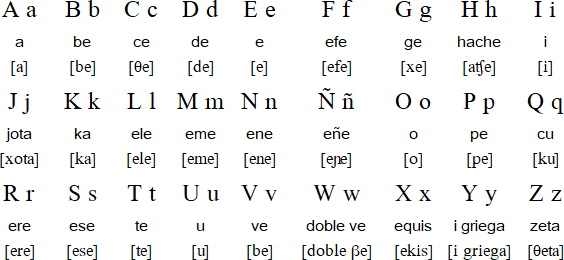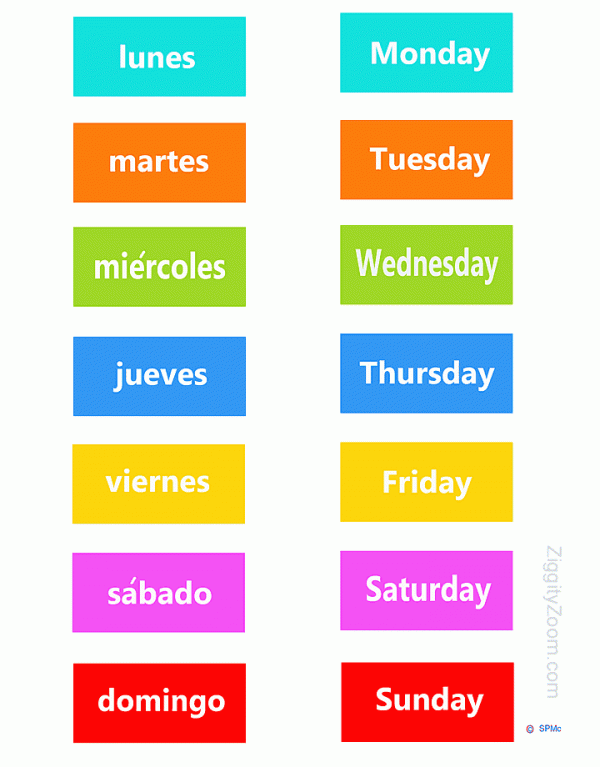
English vs. Spanish
As an English major in college, in my sophomore-year, I take Spanish as the third foreign language because I think both languages are quite useful. Today, English is the official language in many countries, and there are more than five hundred million people whose mother tongue or second language is Spanish. During the process of learning Spanish, I find it really hard and sometimes stressful to learn this language, but I still find some interesting facts of learning English and Spanish. Hence, in this essay, I will discuss the three main differences between English and Spanish: the number of alphabets, the plural forms, and how vocabulary is categorized.


First of all, the amounts of alphabets in English and Spanish are different. We all know that the amounts of alphabets in English are 26. However, the amounts of alphabets in Spanish vary. Some say that there are 27 alphabets in Spanish, while others say there are more than 30 alphabets in Spanish! Similar to the English alphabets, the Spanish alphabets nowadays include 26 Latin scripts but with one additional letter, “Ñ.” The reason why some people say there are more than 30 alphabets in Spanish is that they still regard these five sounds as alphabets:“ch,” “ll,” “rr,” “gu,” and “qu.” Nevertheless, after the tenth congress of the Association of Spanish Language Academies in 1994, the members of this association have decided to treat these words as sequences of letters but not a single alphabet anymore. Though we might think that English and Spanish’s alphabets are quite similar, they are actually two different languages.
Although many people may know that there are plural forms in both English and Spanish, where we should put “s” or ”es” in the end of a word differs. In Spanish, we will put “s” in the end of the word if the suffix is a vowel. When the suffix is a consonant, we will put “es” in the end if it’s a plural form. On the contrary, we put “s” if it is a regular noun in English, and we put “es” as a suffix because the noun ends in five conditions: sh, ch, s, x, and z. Also, there are still some examples to explain how complex English is. For example, if the ending of the word is “f” or “fe”, we need to delete it and put “ves” as the suffix. If the word ends with “vowel +y”, we ought to delete “y” and replace it with “ies”. Sometimes we have to put “s” while other times we need to put “es” in English. It seems like the plural forms in English are far more complicated than those in Spanish. English learners should memorize more about when and how to put the right suffix after the vocabulary than Spanish learners to make the word a plural.
Lastly, the English speakers don’t distinguish whether the vocabulary is masculine or feminine, while Spanish do. For instance, “profesor” means the male professor in Spanish, while “profesora” means the female one. Also, “vendedor” is the male vendor in Spanish, and “vendedora” is the female one. Next, we can take the word “lawyer” as another example. English speakers say “lawyer” to describe those who give advice to people about the law and speak for them in court without mentioning the gender. Nonetheless, we might find that “abogado” in Spanish is the male lawyer but “abogada” the female one. Because English speakers are not familiar with this grammar, whether the vocabulary itself is masculine or feminine drives lots of Spanish beginners crazy.

There are lots of differences between English and Spanish, just like the three aspects mentioned above: the number of alphabets, the usage of plural forms, and the categorization of vocabularies in these two languages. There are several differences between English and Spanish, and it is too hard to find two highly similar languages. It’s just like if we compare the American English used in the east coast and those used in the west coast, or native Taiwanese that is used in northern Taiwan and those used in southern Taiwan, they are not the same. Even though there are more than 7,000 languages worldwide, no particular language is superior or inferior. Just like human beings, we devote ourselves in eliminating the barrier of races, and we need to embrace the differences among languages in the world and learn how to communicate with others.
Sources
Wikipedia (n/d) Spanish orthography.
Retrieved from:https://en.wikipedia.org/wiki/Spanish_orthography
Pedro R. Aguilar (n/d) LHS CISCO
Retrieved from : http://lhscisco.weebly.com/pedro.html
Omniglot (n/d) Spanish (español/castellano)
Retrieved from: https://omniglot.com/writing/spanish.htm
Ziggity Zoom Media(n/d) Spanish English Days of the Week
Retrieved from: https://www.pinterest.com/pin/290693350917491275/